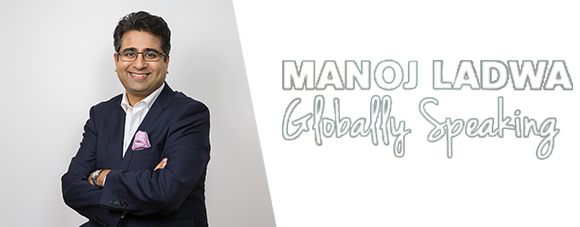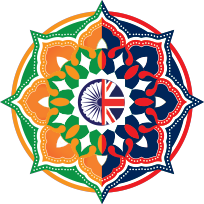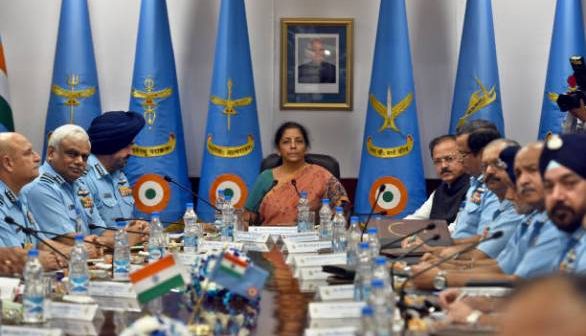by Manoj Ladwa
India Inc. Founder & CEO Manoj Ladwa marks International Women’s Day with a review of how the BJP-Modi government is delivering on its promise to women voters.

International Women’s Day has come and gone but what hasn’t is the growing recognition that women in India must have the opportunities to play their fullest part in all aspects of the country’s growth.
Consider this:
- For the first time ever, the government of India has two women in the critical Cabinet Committee on Security (CCS), which deliberates and decides on all security and defence-related matters
- For the first time, a woman, Nirmala Sitharaman, is the full-time Defence Minister of India
- Elsewhere, two of India’s three largest private sector banks are headed by women – Chanda Kochhar is at the helm of ICICI Bank, India’s largest private sector lender, and Shikha Sharma heads Axis Bank, the country’s third-largest
- Tessy Thomas is celebrated as Agni Putri and called the Missile Woman of India for successfully leading the launch of India’s long-distance Agni IV missile
- And, Flying Officer Avani Chaturvedi recently became the first woman in the history of the Indian Air Force (IAF) to fly a jet fighter when she flew a solo sortie on a Mig-21; her dream: to fly the Rafale fighter when it is inducted into the IAF.
These are just a few random examples drawn from across various walks of life to highlight an effort that has been initiated at the very top of the Indian power pyramid – in the Prime Minister’s Office (PMO). Acutely aware of the discrimination that women have been subject to since medieval times, Prime Minister Narendra Modi has set a determined course to correct this historical injustice.
Clean India
The Swachh Bharat Abhiyan to build millions of private and public toilets across India was among the first flagship schemes he announced. The goal: to make India open defecation free.
But there’s another equally important and officially acknowledged objective: to ensure women’s safety and encourage girls not to drop out of school. This last is a massive roadblock on the path to universal education as many girls, especially in rural areas, drop out of school after attaining puberty because of the lack of toilets in their schools. Hence, a sub-scheme within the larger initiative has been named Swachh Vidyalaya (Clean Schools) to encourage girls’ schools to build toilets for their students with government support.
Women-friendly schemes
A hugely popular scheme is the Pradhan Mantri Ujjwala Yojana, which has provided free cooking gas connections to about 32 million rural households, saving women from the health hazards associated with traditional cooking methods that use firewood and cow-dung cakes.
Then, of course, there is the globally acknowledged “Beti Bachao Beti Padhao”, which exhorts families to educate their girl children and also save them from female infanticide that is quite prevalent in some areas.
And Jan Dhan Yojana, the world’s largest financial inclusion scheme, which has opened almost 300 million bank accounts for poor people without access to formal banking, and the Mudra scheme, which provides small loans to micro entrepreneurs, have significantly increased the empowerment of women as women are the biggest beneficiaries of these schemes.
The Jan Dhan Yojana corrected a historic wrong by giving about 165 million women their own bank accounts and control over their own lives, while the Mudra initiative empowered about 79 million women to become self-reliant.
And, on International Women’s Day, the Modi government launched the National Nutrition Mission to reduce under-nutrition, anaemia (among children, women and adolescent girls) and reduce low birth weight. Since women, especially rural women, are the primary bearers of this heavy cross, they will also be the main beneficiaries of this exemplary initiative.
Last year, the Indian Parliament passed a bill granting women working in the organised sector paid maternity leave of 26 weeks, up from 12 weeks, a decision which is expected to impact over 1.8 million women in the country. The move brings India in the world’s top three in terms of paid maternity leave, after Canada and Norway who offer 50 weeks and 44 weeks respectively.
There are several other large and small initiatives but the purpose of this article is not to provide a laundry list of women-centric schemes in India but to celebrate the fact that under Prime Minister Modi, women are at last being given their due – long denied by an ossified society and an uncaring political elite.
Walking the talk
As Indian Textiles Minister Smriti Irani wrote in an article on the occasion of International Women’s Day on March 8, the Prime Minister’s initiatives are based on the intrinsic values of India’s civilizational heritage, which have regrettably far too often benn lost on Indians and foreign commentators.
She gave the examples of Rani Laxmibai of Jhansi, Rani Chennamma of Kittur and Maharani Ahilyabai Holkar but I’ll go further back in the foundational beliefs of the country’s civilization. According to Indian philosophy, the Supreme Power that rules the universe is feminine. It has variously been called Shakti, Adi Parashakti or the Divine Mother.
The Prime Minister is not just making grand announcements. He is walking the talk. His Cabinet includes as many as six women, probably the highest ever in India. The Speaker of the Lok Sabha, the Lower House of Indian Parliament, is a woman and his party, the BJP, is the only political party in India to have given women one-third of all elected party positions to women.
The results are beginning to show on the ground. The skewed sex ratio in the north Indian state of Haryana, which was at an abysmal 911 girls for every 1,000 boys, has improved to 923:1,000 over the last three years.
I accept that it needs to improve much more before we can celebrate but even the most churlish critic of the Prime Minister will admit that a 12-point improvement in the short span of three years is cause for cheer.
Breaking stereotypes
In urban settings, women are edging closer to equality, as in the West. But the story changes rapidly in many parts of rural India. But lets not kid ourselves. Deeply entrenched attitudes and millennia-old apathy toward women will not disappear overnight.
Changing mind sets and breaking stereotypes lies at the heart of women’s empowerment, especially in rural areas. The various schemes introduced by the BJP-Modi government are not just about immediate impact but aimed at creating a strong foundation for future generations.
There is no doubt that a lot needs doing and in some cases legislation may be the only answer.
But the fight for equality and gender justice has been joined in right earnest. And the fact that for the first time ever, an Indian Prime Minister is using his personal political capital to put women at the front and centre of his reform programme makes me optimistic that society will change rapidly for the better.







